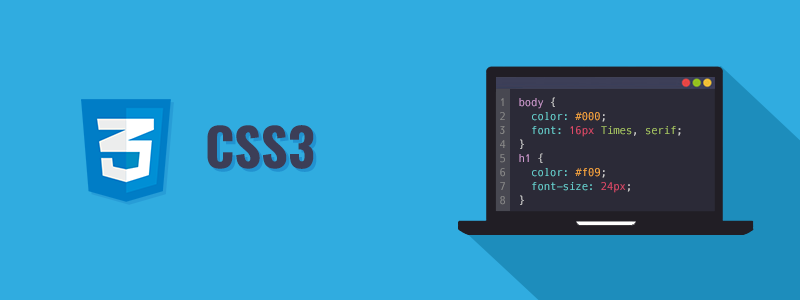CSS Tutorial
CSS is the key presentational technology that is used in website design.

CSS stands for Cascading Style Sheets. CSS is a standard style sheet language used for describing the presentation (i.e. the layout and formatting) of the web pages.
Prior to CSS, nearly all of the presentational attributes of HTML documents were contained within the HTML markup (specifically inside the HTML tags); all the font colors, background styles, element alignments, borders and sizes had to be explicitly described within the HTML.
As a result, development of the large websites became a long and expensive process, since the style information were repeatedly added to every single page of the website.
To solve this problem CSS was introduced in 1996 by the World Wide Web Consortium (W3C), which also maintains its standard. CSS was designed to enable the separation of presentation and content. Now web designers can move the formatting information of the web pages to a separate style sheet which results in considerably simpler HTML markup, and better maintainability.
CSS3 is the latest version of the CSS specification. CSS3 adds several new styling features and improvements to enhance the web presentation capabilities.
Note: Our CSS tutorial will help you to learn the fundamentals of the latest CSS3 language, from the basic to advanced topics step-by-step. If you're a beginner, start with the basic section and gradually move forward by learning a little bit every day.
What You Can Do with CSS
There are lot more things you can do with CSS.
- You can easily apply same style rules on multiple elements.
- You can control the presentation of multiple pages of a website with a single style sheet.
- You can present the same page differently on different devices.
- You can style dynamic states of elements such as hover, focus, etc. that isn't possible otherwise.
- You can change the position of an element on a web page without changing the markup.
- You can alter the display of existing HTML elements.
- You can transform elements like scale, rotate, skew, etc. in 2D or 3D space.
- You can create animations and transitions effects without using any JavaScript.
- You can create print friendly version of your web pages.
The list does not end here, there are many other interesting things that you can do with CSS. You will learn about all of them in detail in upcoming chapters.
Advantages of Using CSS
The biggest advantage of CSS is that it allows the separation of style and layout from the content of the document. Here are some more advantages, why one should start using CSS?
- CSS Save Lots of Time — CSS gives lots of flexibility to set the style properties of an element. You can write CSS once; and then the same code can be applied to the groups of HTML elements, and can also be reused in multiple HTML pages.
- Easy Maintenance — CSS provides an easy means to update the formatting of the documents, and to maintain the consistency across multiple documents. Because the content of the entire set of web pages can be easily controlled using one or more style sheets.
- Pages Load Faster — CSS enables multiple pages to share the formatting information, which reduces complexity and repetition in the structural contents of the documents. It significantly reduces the file transfer size, which results in a faster page loading.
- Superior Styles to HTML — CSS has much wider presentation capabilities than HTML and provide much better control over the layout of your web pages. So you can give far better look to your web pages in comparison to the HTML presentational elements and attributes.
- Multiple Device Compatibility — CSS also allows web pages to be optimized for more than one type of device or media. Using CSS the same HTML document can be presented in different viewing styles for different rendering devices such as desktop, cell phones, etc.
Tip: Now most of the HTML attributes are being deprecated and it's not recommended to use. So it's a good idea to use as much CSS as possible to increase the adaptability your website and make them compatible to future browsers, as well.
What This Tutorial Covers
This CSS tutorial series covers all the fundamentals of CSS, including the idea of selectors, methods of setting colors and backgrounds, way of formatting fonts and text, styling UI elements such as hyperlinks, lists, tables, etc. as well as the concept of CSS box model, and so on.
Once you're comfortable with the basics, you'll move on to next level that explains the way of setting dimension and alignment of elements, methods for positioning elements on a web page, using image sprites, as well as the concept of relative and absolute units, visual formatting model, display and visibility, layers, pseudo classes and elements, media dependent style sheets, and so on.
Finally, you'll explore some advanced features introduced in CSS3 like gradient colors, drop shadow effect, 2D and 3D transforms, alpha transparency, as well as the method of creating transition and animation effect, flex layouts, filter effect, the concept of media queries, and more.
Tip: Every chapter in this tutorial contains lots of real-world examples that you can try and test using an online editor. These examples will help you to better understand the concept or topic. It also contains smart workarounds as well as useful tips and important notes.



